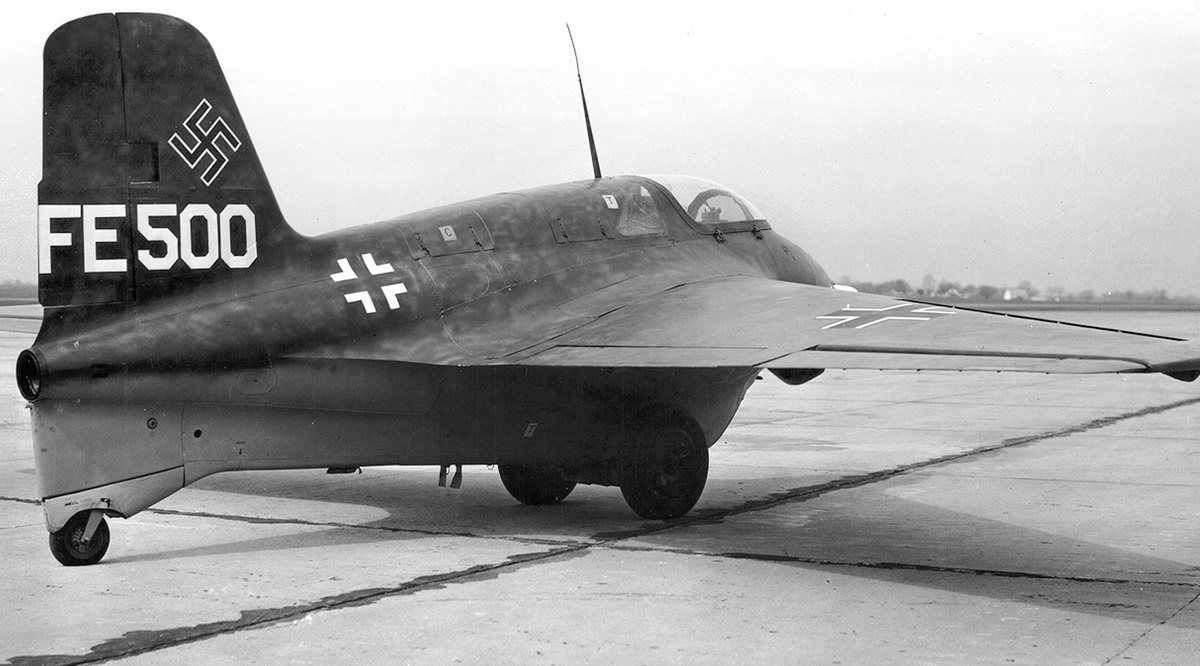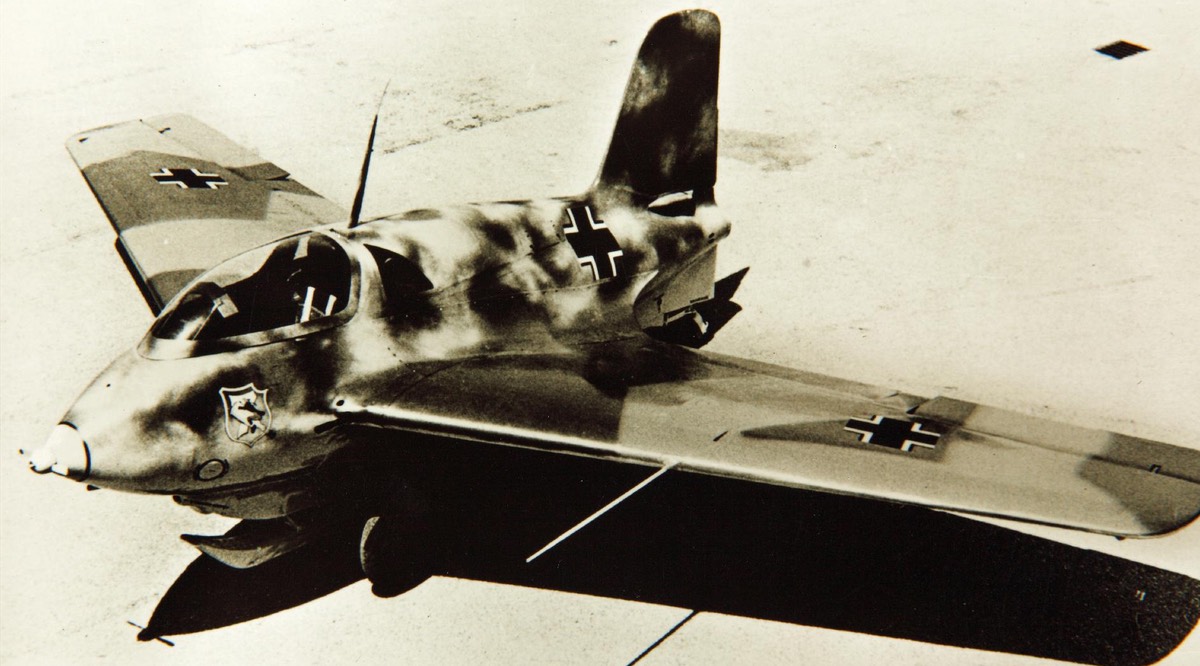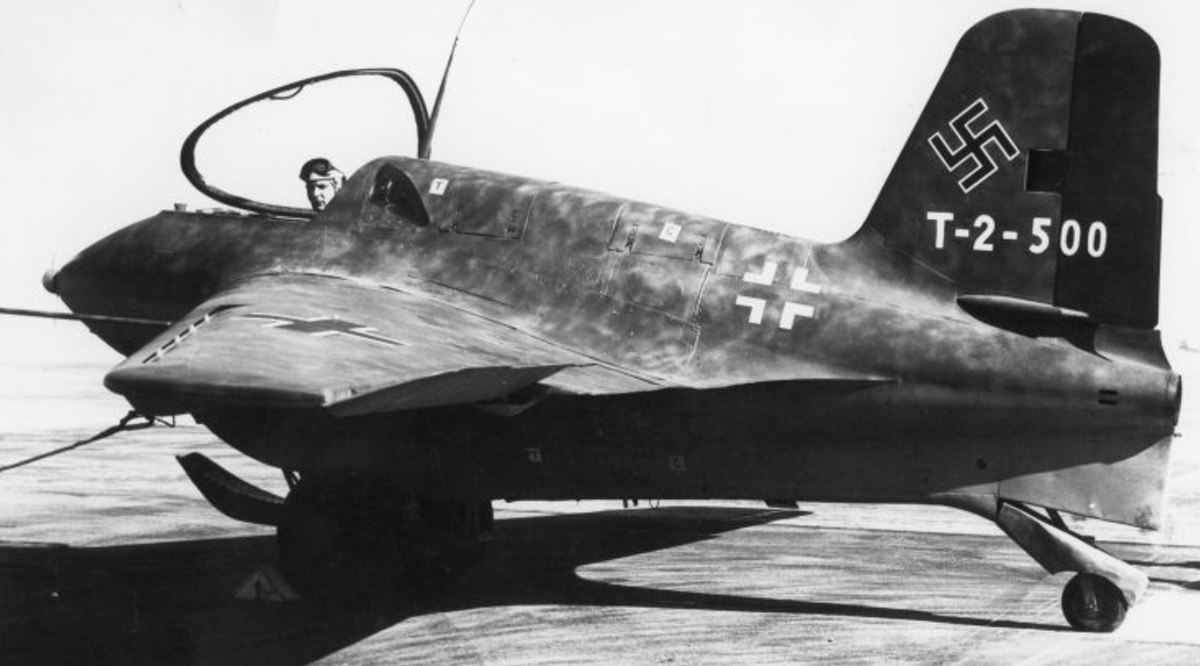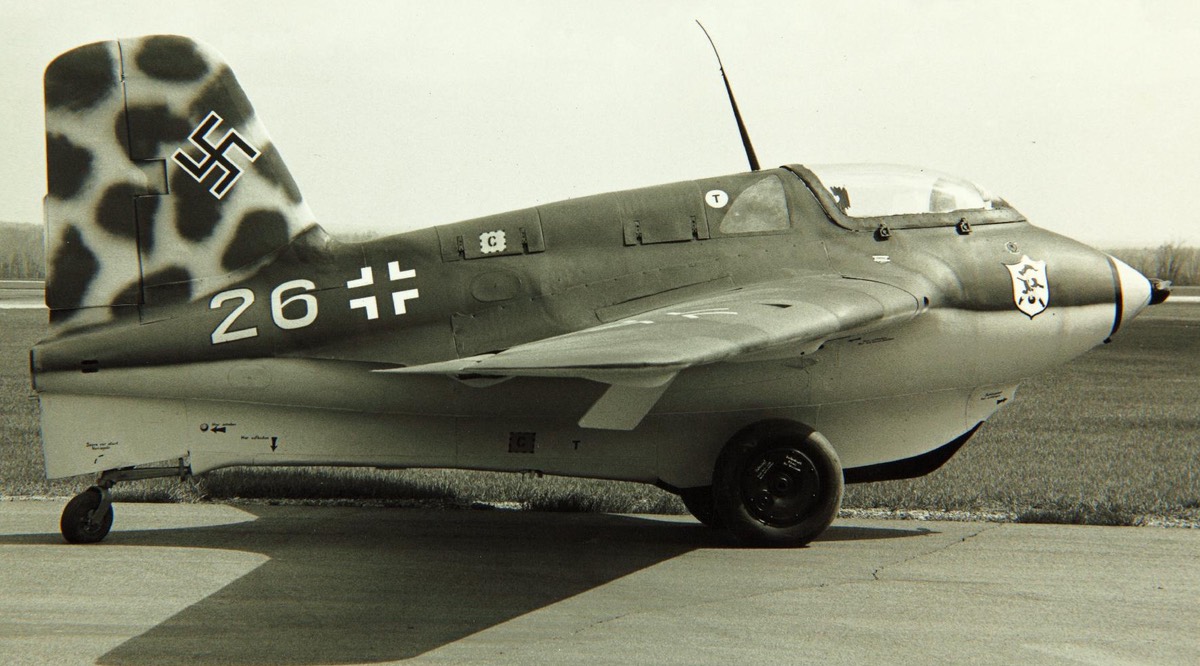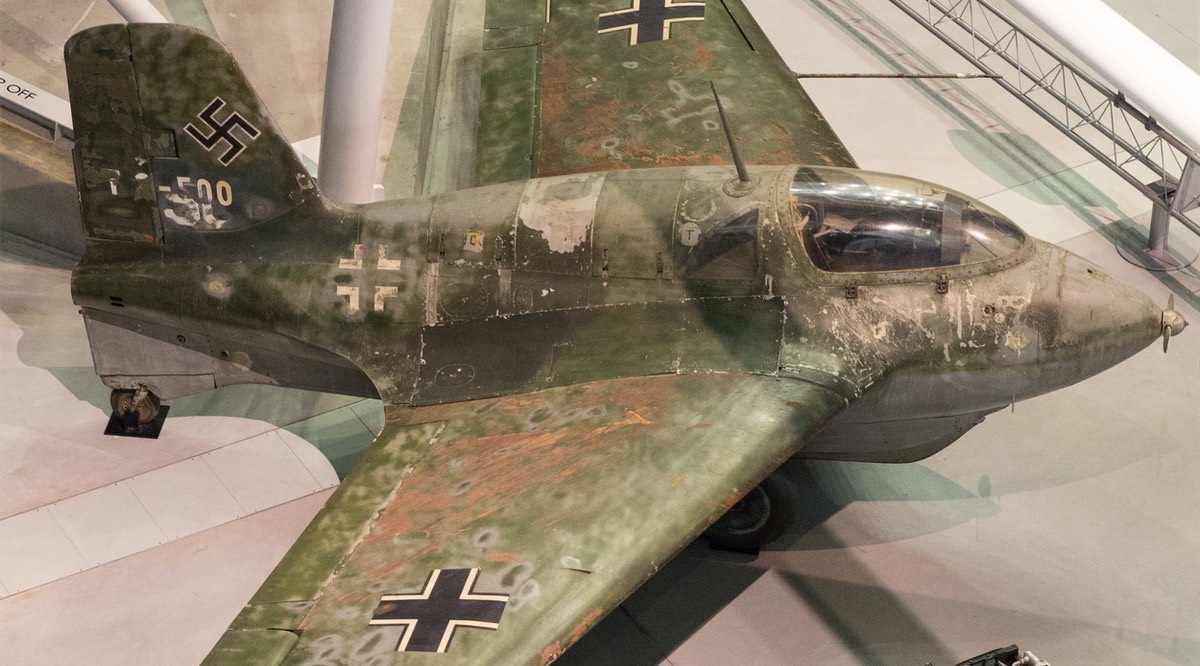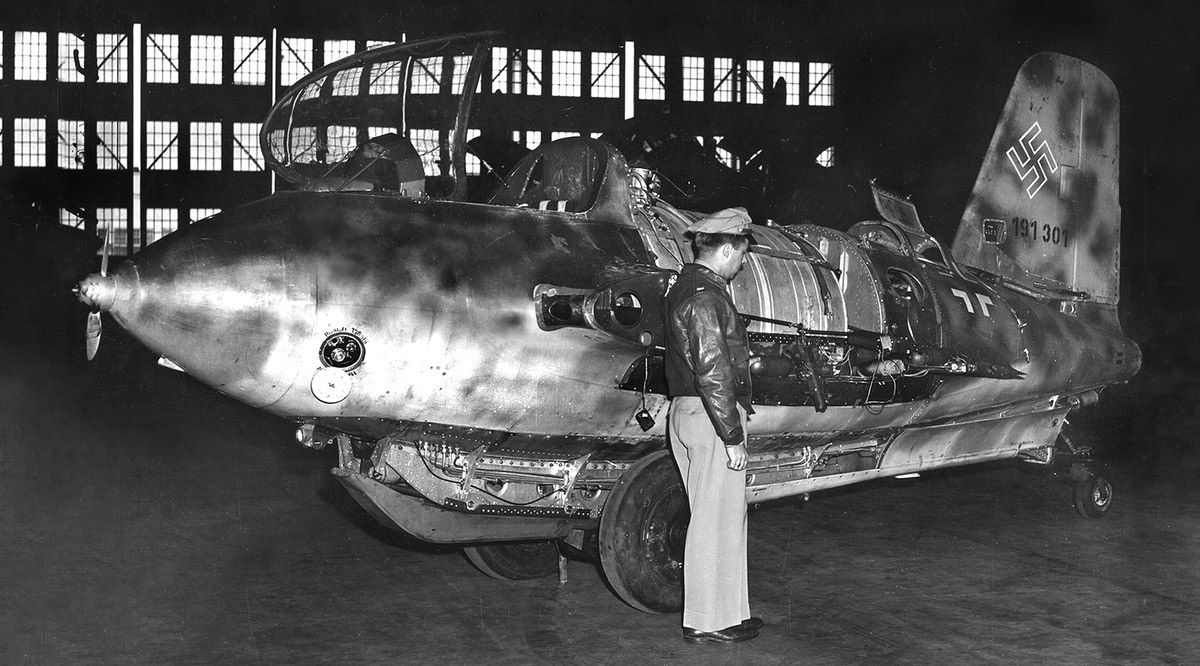Price: $11.95
- 3 magazines and 1 manual
- PDF contains 449 pages
- Content is keyword searchable
- Print a personal copy
- Pay via PayPal or Credit Card
- International orders welcome!
- Download files upon payment
April 1977
- Rocket Fighter, Me-163 Comet
- Winged Excalibur, Douglas SBD Dauntless
- Clobbering, a Primer of WWII Fighter Tactics
- Rangefinder, F-82 Twin Mustang
May 1977
- Custer Channel Wing Story
- Skybolt, Pt VIII, P-38 meets Two More Enemies
- Rocket Fighter, Me-163 Comet
- Outcasts of the Islands, Graveyards of Pacific Warbirds
- Things with Wings, Foolish looking but they flew!
April 2005
- Turboprops – Why didn’t these advanced designs ever succeed?
- Class of ’56 – It was a good year for new planes
- Bat-Eye Squadron – Marine night fighters of WWII
- Blitzkrieg over Muroc – Part II of our series on testing the German jets
Manual (German)
- Teil 0 Allgemeine Angaben (General Info)
- Teil 2 Fahrwerk (Landing Gear)
- Teil 3 Leitwerk (Empannage)
- Teil 4 Steuerwerk (Control Unit)
- Teil 5 Tragwerk (Structure)
- Teil 6 + 7 Triebwerkanlage (Powerplant)
- Teil 8a Schu?waffenanlage (Weapons)
- Teil 9a Allgemeine Ausrüstung (General Equipment)
- Teil 9b Bordnetz (Electrical System)
- Teil 9c Druckölanlage (Hydraulics)
- Teil 10 Beförderung und Bruchbergung (Transport & Salvage)
- Allgemeine Geräteliste (Equipment List)
- Nearly 100 Messerschmitt Me-163 Komet Photos
Messerschmitt Me-163 Komet
Me-163B-1A Specs
On Display
Cutaway
Videos
General Characteristics
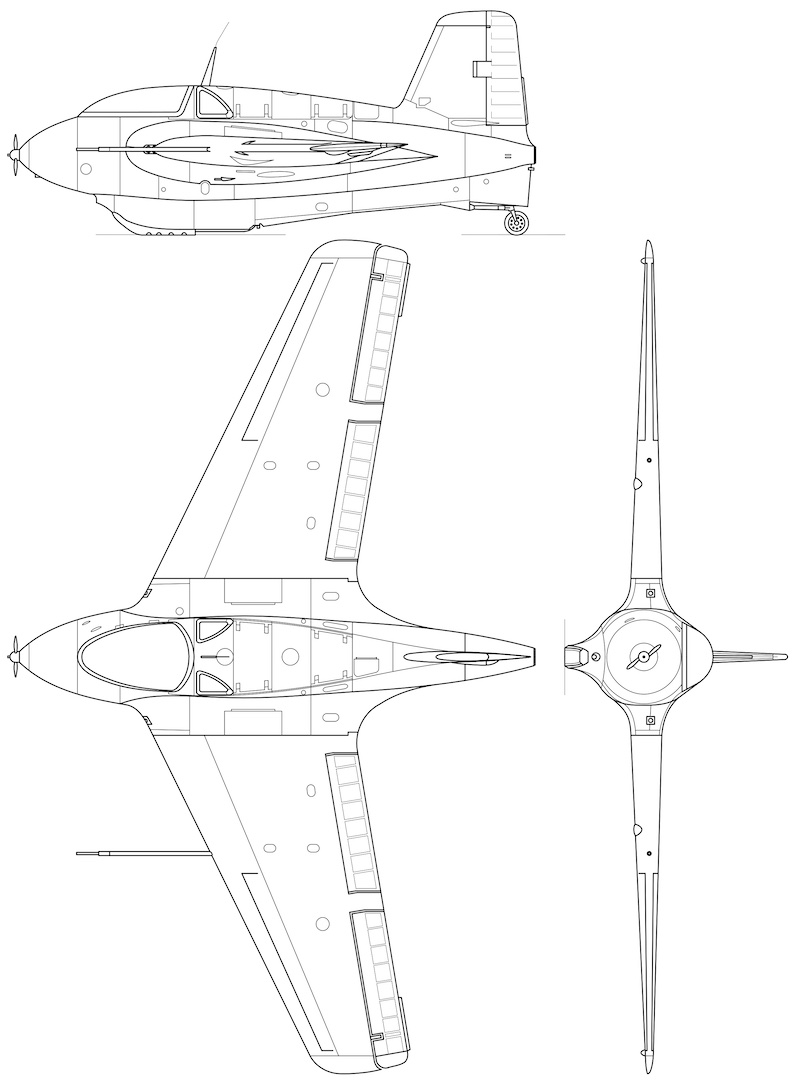
- Crew: 1
- Capacity: (Me 163S + 1)
- Length: 5.7 m (18 ft 8 in)
- Wingspan: 9.3 m (30 ft 6 in)
- Height: 2.5 m (8 ft 2 in)
- Wing area: 19.6 m2 (211 sq ft)
- Empty weight: 1,905 kg (4,200 lb)
- Max takeoff weight: 4,309 kg (9,500 lb)
- Fuel capacity:
- C-Stoff (fuel) 468 kg (1,032 lb)
- T-Stoff (oxidiser) 1,550 kg (3,420 lb)
- Powerplant: 1 × Hellmuth Walter Kommanditgesellschaft HWK 109-509A-2 bi-propellant liquid-fuelled rocket motor, 14.71 kN (3,307 lbf) thrust maximum; 980 N (220 lbf) minimum, fully variable
Performance
- Never exceed speed: 900 km/h (560 mph, 490 kn) at all altitudes, sea level to 12,000 m (39,000 ft)
- Flap limiting speed: 300 km/h (190 mph; 160 kn)
- Rotate speed at take-off: 280 km/h (170 mph; 150 kn)
- Best climbing speed: 700–720 km/h (430–450 mph; 380–390 kn)
- Endurance: 7.5 mins powered
- Rate of climb: 81 m/s (16,000 ft/min)
- Time to altitude: From standing start
- 2,000 m (6,600 ft) in 1.48 min
- 4,000 m (13,000 ft) in 2.02 min
- 6,000 m (20,000 ft) in 2.27 min
- 8,000 m (26,000 ft) in 2.54 min
- 10,000 m (33,000 ft) in 3.19 min
- 12,000 m (39,000 ft) in 3.45 min
- Wing loading: 209 kg/m2 (43 lb/sq ft) at maximum take-off weight
- Thrust/weight: 0.42
Armament
- Guns:
- 2 × 30 mm (1.181 in) Rheinmetall Borsig MK 108 cannon with 60 rpg (B-1a), or
- 2 × 20 mm (0.787 in) MG 151/20 cannon with 100 rpg (Ba-1 / B-0 pre-production aircraft)
It has been claimed that at least 29 Komets were shipped out of Germany after the war and that of those at least 10 have been known to survive the war to be put on display in museums around the world. Most of the 10 surviving Me 163s were part of JG 400, and were captured by the British at Husum, the squadron’s base at the time of Germany’s surrender in 1945. According to the RAF museum, 48 aircraft were captured intact and 24 were shipped to the United Kingdom for evaluation, although only one, VF241, was test flown (unpowered).
Australia
- Me 163B, Werknummer 191907 was part of JG 400, captured at Husum and was shipped to the RAE. It was allocated the RAF Air Ministry number of AM222 and was dispatched from Farnborough to No. 6 MU, RAF Brize Norton, on 8 August 1945. On 21 March 1946, it was recorded in the Census of No. 6 MU, and allocated to No. 76 MU (Wroughton) on 30 April 1946 for shipment to Australia. For many years this aircraft was displayed at RAAF Williams Point Cook, but in 1986, the Me 163 was transferred to The Australian War Memorial for refurbishment. It was stored at the AWM Treloar Technology Annex Mitchell, refurbished and reassembled, and was later put up for display together with a Messerschmitt Me 262A-2a, Werknummer 500200 (AM81).
Canada
- Me 163B, Werknummer 191659 (AM215) or 191914 (AM220), is held at the Canada Aviation and Space Museum, Ottawa. Like two of the British Komets, this aircraft was part of JG 400 and captured at Husum. It was shipped to Canada in 1946.
- Werknummer 19116 (but more probable 191916) and 191095 (AM211) also seem to have been held at one time in this museum.
Germany
- A Me 163B, Werknummer 191904, “Yellow 25”, belonging to JG 400 was captured by the RAF at Husum in 1945. It was sent to England, arriving first at Farnborough, receiving the RAF Air Ministry number AM219 and then transferred to Brize Norton on 8 August 1945, before finally being placed on display at the Station Museum at Colerne. When the museum closed in 1975 the aircraft went to RAF St Athan, receiving the ground maintenance number 8480M. On 5 May 1988 the aircraft was returned to the Bundeswehr’s Luftwaffe air arm, and moved to the Luftwaffe Alpha Jet factory at the air base in Oldenburg (JBG 43), not far from the JG 400 unit’s wartime base at Bad Zwischenahn, now a golf course. The airframe was in good condition but the cockpit had been stripped and the rocket engine was missing. Eventually an elderly German woman came forward with Me 163 instruments that her late husband had collected after the war, and the engine was reproduced by a machine shop owned by Me 163 enthusiast Reinhold Opitz. The factory closed in the early 1990s and “Yellow 25” was moved to a small museum created on the site. The museum contained aircraft that had once served as gate guards, monuments and other damaged aircraft previously located on the air base. In 1997 “Yellow 25” was moved to the official LuftwaffeMuseum located at the former RAF base at Berlin-Gatow, where it is displayed today alongside a restored Walter HWK 109–509 rocket engine. This particular Me 163B is one of the very few World War II–era German military aircraft, restored and preserved in a German aviation museum, to have a swastika marking, in a “low visibility” white outline form, currently displayed on the tailfin.
- Me 163B, Werknummer 120370, “Yellow 6” of JG 400, is displayed at the Deutsches Museum, Munich. It was originally sent to Britain, where it had received the RAF Air Ministry number AM210. It was given to the Deutsches Museum by RAF Biggin Hill Station. Some claim this is 191316, but that is still at the London Science Museum.
United Kingdom
Of the 21 aircraft that were captured by the British, at least three have survived. They were assigned the British serial numbers AM200 to AM220.
- Me 163B, Werknummer 191316, “Yellow 6”, has been on display at the Science Museum in London, since 1964 with the Walter motor removed for separate display. A second Walter motor and a takeoff dolly are part of the museum’s reserve collection and are not generally on display to the public.
- Me 163B, Werknummer 191614, has been at the RAF Museum site at RAF Cosford, since 1975. Before then, it was at the Rocket Propulsion Establishment at Westcott, Buckinghamshire. This aircraft last flew on 22 April 1945, when it shot down an RAF Lancaster.
- Me 163B-1a, Werknummer 191659 and RAF Air Ministry serial number AM215, “Yellow 15”, was captured at Husum in 1945 and was sent to the College of Aeronautics at Cranfield, England in 1947. After many years of touring airshows and various outdoor gatherings around the UK it was loaned to the National Museum of Flight at East Fortune Airfield, East Lothian, Scotland in 1976.
United States
- Five Me 163s were originally brought to the United States in 1945, receiving the Foreign Equipment numbers FE-495 and FE-500 to 503. An Me 163 B-1a, Werknummer (serial number) 191301, arrived at Freeman Field, Indiana, during mid-1945, and received the foreign equipment number FE-500. On 12 April 1946, it was flown aboard a cargo aircraft to the U.S. Army Air Forces facility at Muroc dry lake in California for flight testing. Testing began on 3 May 1946 in the presence of Dr. Alexander Lippisch and involved towing the unfueled Komet behind a Boeing B-29 Superfortress to an altitude of 9,000–10,500 m (29,500–34,400 ft) before it was released for a glide back to earth under the control of test pilot Major Gus Lundquist. Powered tests were planned, but not carried out after delamination of the aircraft’s wooden wings was discovered. It was then stored at Norton AFB, California until 1954, when it was transferred to the Smithsonian Institution. The aircraft remained on display in an unrestored condition at the museum’s Paul E. Garber Preservation, Restoration, and Storage Facility in Suitland, Maryland, until 1996, when it was lent to the Mighty Eighth Air Force Museum in Pooler, Georgia for restoration and display but has since been returned to the Smithsonian and as of 2011 is on display unrestored at the National Air and Space Museum’s Steven F. Udvar-Hazy Center near Washington D.C.
- Me 163B, Werknummer 191 095, is on fully restored display at the National Museum of the United States Air Force at Wright-Patterson AFB near Dayton, Ohio. It was acquired from the Canadian National Aviation Museum (now the Canada Aviation and Space Museum), where it had been restored, and was placed on display 10 December 1999. Komet test pilot Rudolf “Rudi” Opitz was on hand for the dedication of the aircraft and discussed his experiences of flying the rocket-propelled fighter to a standing room only crowd. During the aircraft’s restoration in Canada it was discovered that the aircraft had been assembled by French forced laborers who had deliberately sabotaged it by placing stones between the rocket’s fuel tanks and its supporting straps. There are also indications that the wing was assembled with contaminated glue. Patriotic French writing was found inside the fuselage. The aircraft is displayed without any unit identification, but has its Werknummer restored to its normal fin location. Fully restored examples of both the Me 163B’s single-chamber rocket motor, as well as the only known example in the United States of the experimental twin-chamber Walter “509B” rocket motor, are each on display in front, one each to either side, of WkNr. 191 095.
- Me 163B, Werknummer 191660, “Yellow 3”, is owned by Paul Allen’s Flying Heritage Collection. Between 1961 and 1976, this aircraft was displayed at the Imperial War Museum in London. In 1976, it was moved to the Imperial War Museum Duxford. It underwent a lengthy restoration, beginning in 1997, that was frequently halted as the restorers were diverted to more pressing projects. In May 2005, it was sold, reportedly for £800,000, to raise money for the purchase of a de Havilland/Airco DH.9 as the Duxford museum had no examples of a World War I bomber in its collection. Permission for export was granted by the British government’s Department for Culture, Media and Sport as three other Komets were held in British museums.
Replicas
- A flying replica Me 163 was constructed between 1994 and 1996 by Joseph Kurtz, a former Luftwaffe pilot who trained to fly Me 163s, but who never flew in combat. He subsequently sold the aircraft to EADS. The replica is an unpowered glider whose shape matches that of an Me 163, although its construction completely differs: the glider is built of wood with an empty weight of 285 kilograms (628 lb), a fraction of the weight of a wartime aircraft. Reportedly, it has excellent flying characteristics. The glider is painted red to represent the Me 163 flown by Wolfgang Späte. As of 2011, it was still flying with the civil registration D-1636.
- In the early 2000s, a rocket-powered airworthy replica, the Komet II, was proposed by XCOR Aerospace, a former aerospace company that had previously built the XCOR EZ-Rocket rocket-plane. Although outwardly the same as a wartime aircraft, the Komet II‘s design would have differed considerably for safety reasons. It would have been partially constructed with composite materials, powered by one of XCOR’s own simpler and safer, pressure fed, liquid oxygen/alcohol engines, and retractable undercarriage would have been used instead of a takeoff dolly and landing skid.
- Several static replica Me 163s are exhibited in museums.
https://www.youtube.com/watch?v=BNIpJcOZPlA



